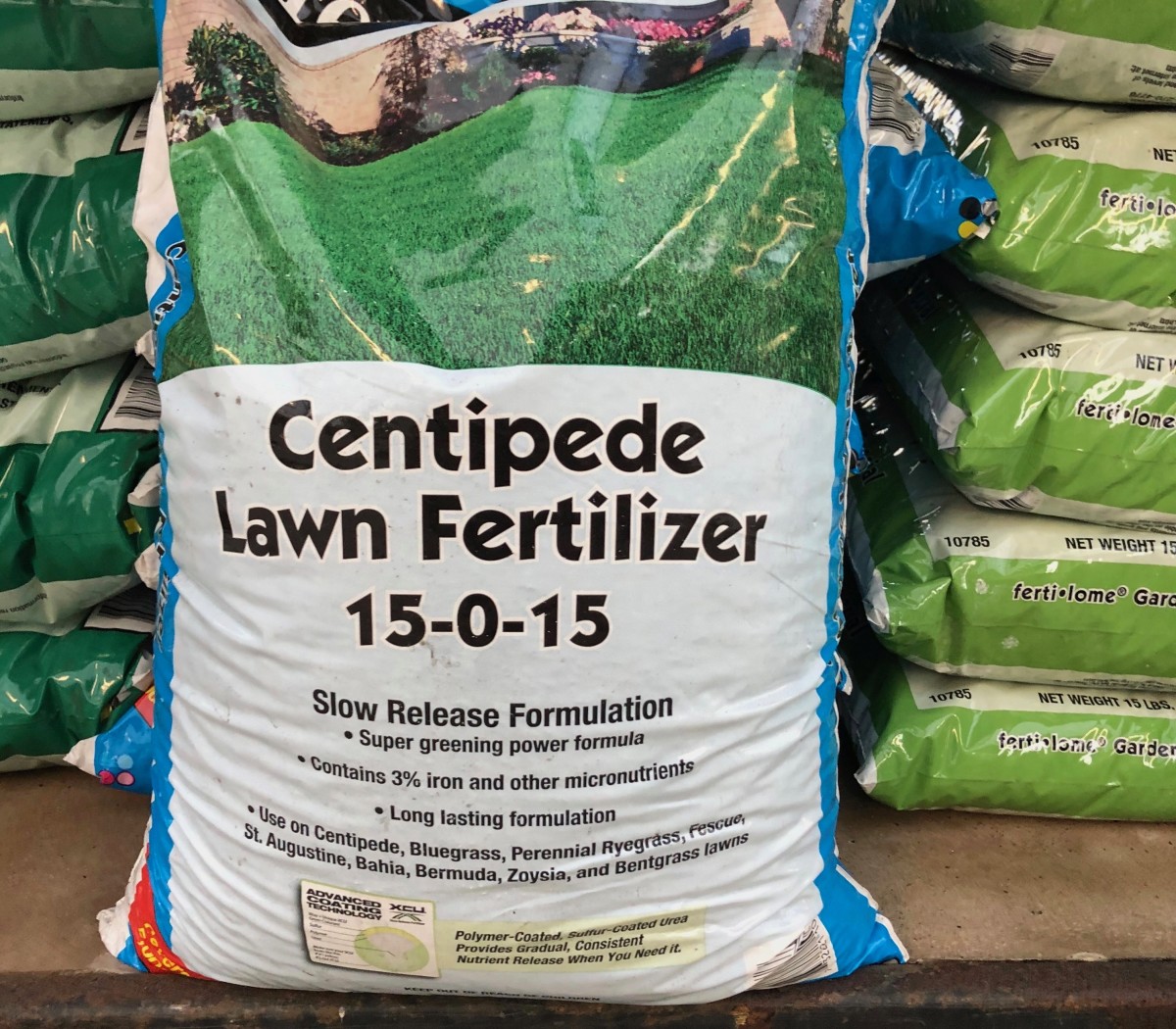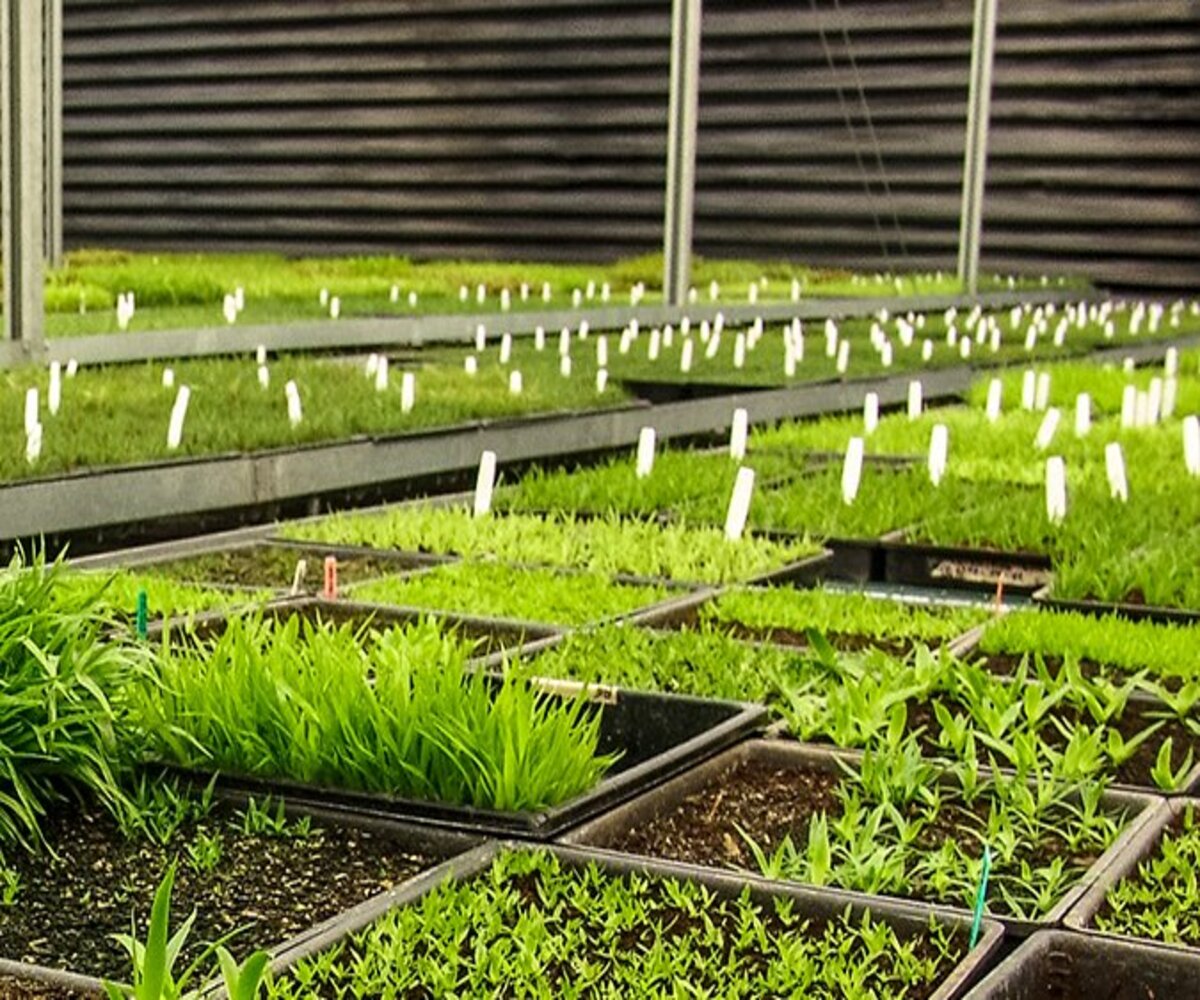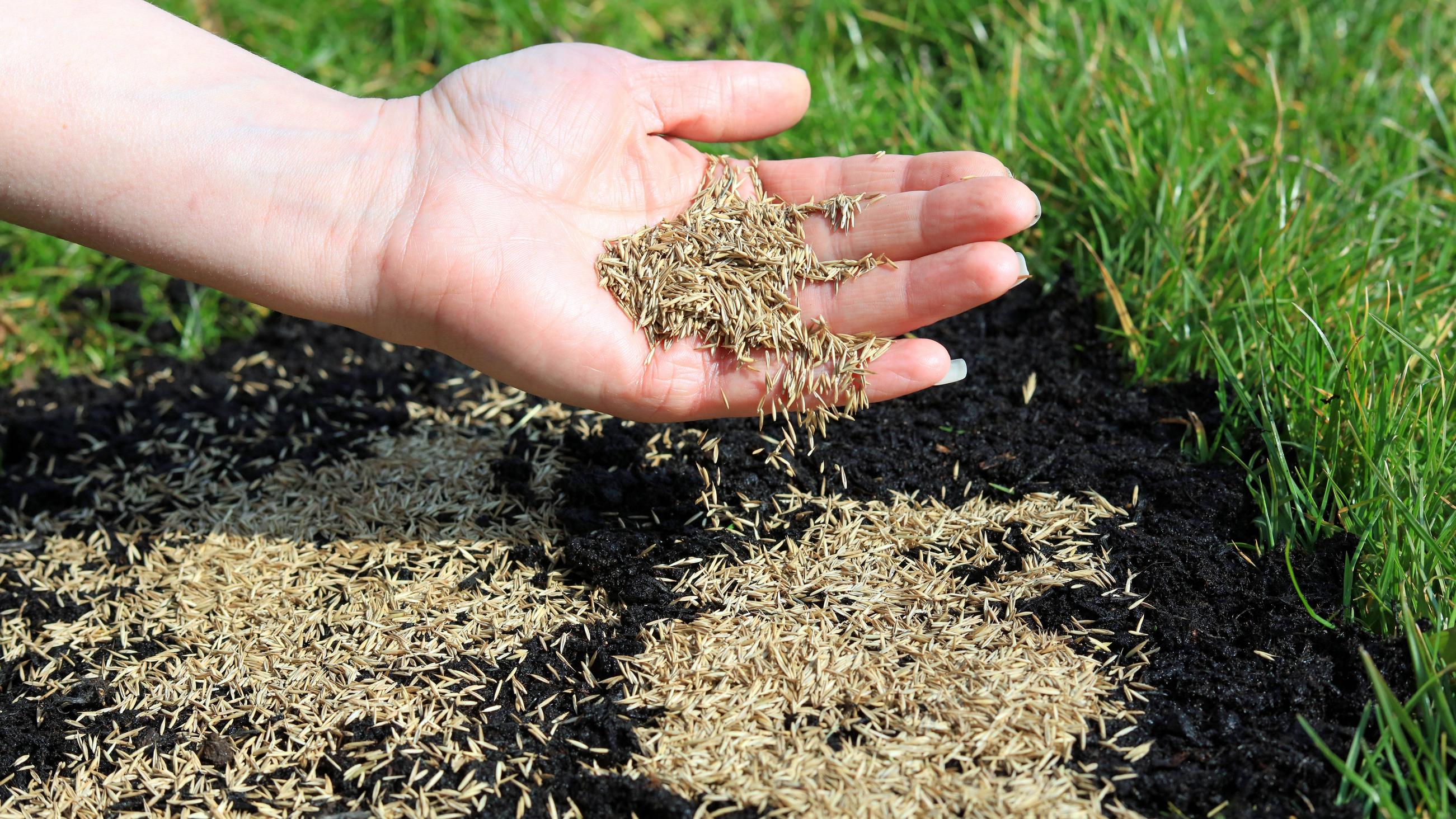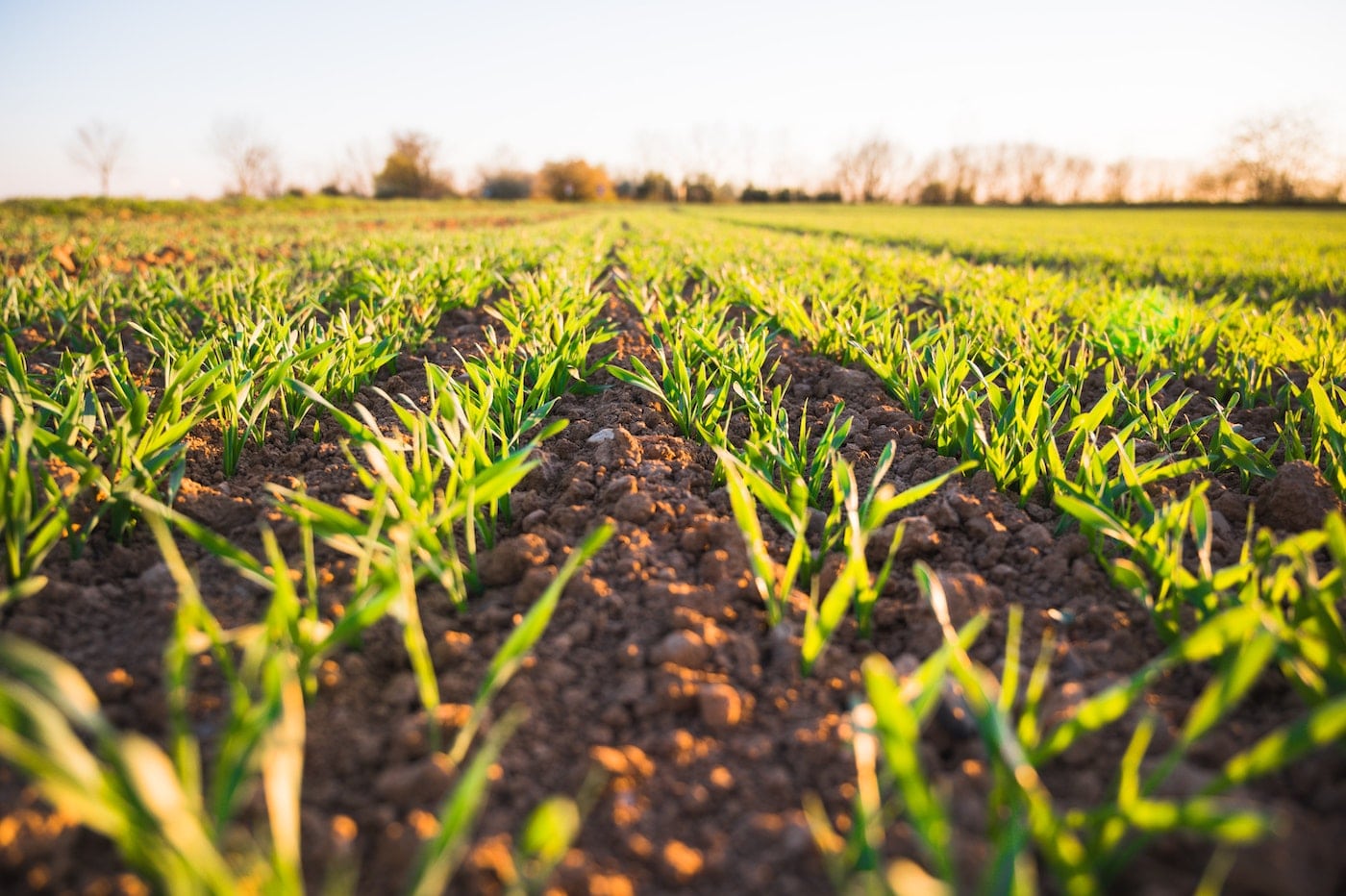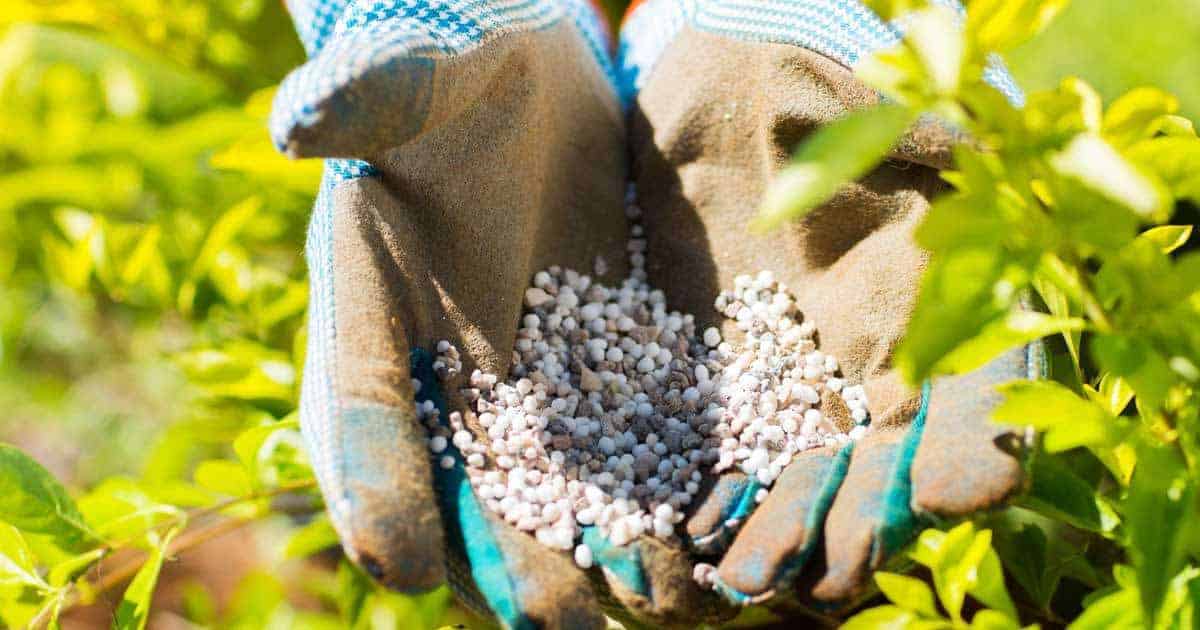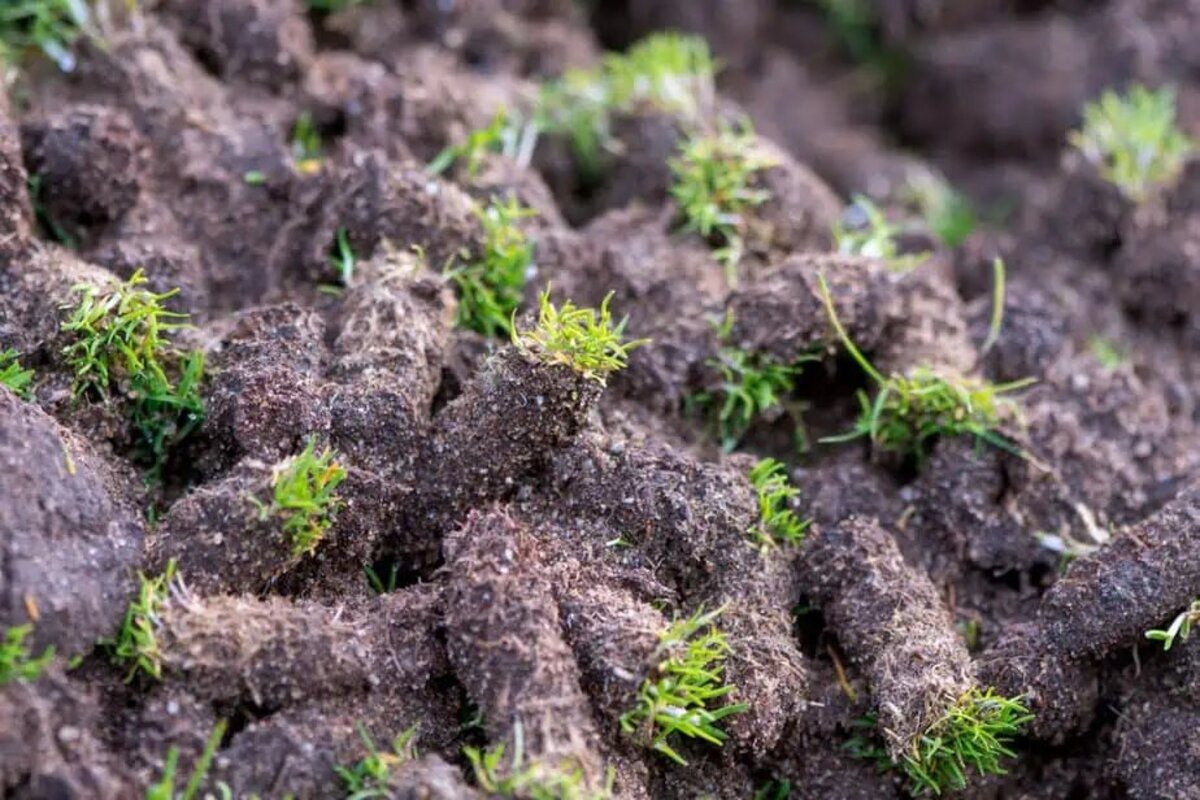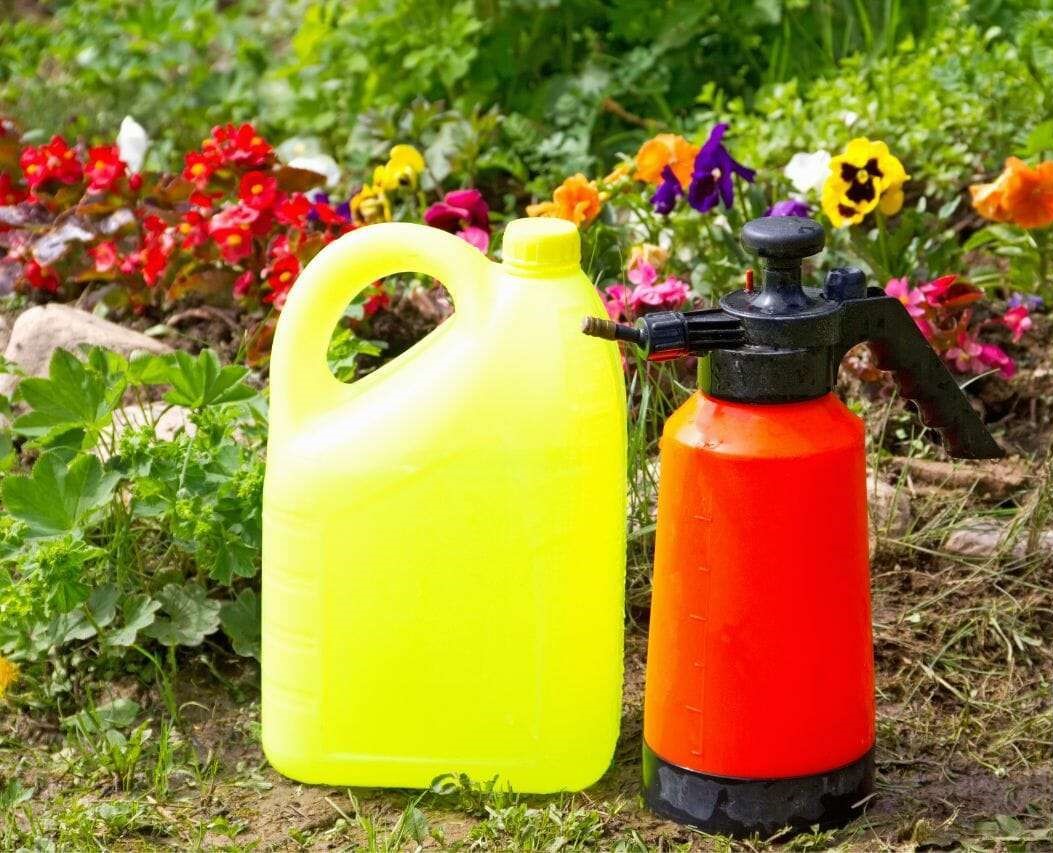Home>Types of Gardening>Edible Gardening>What Is 14-14-14 Fertilizer Used For


Edible Gardening
What Is 14-14-14 Fertilizer Used For
Modified: January 22, 2024
Learn how to use 14-14-14 fertilizer in edible gardening to promote healthy growth and maximize yields. Find out the benefits and application methods for this versatile fertilizer.
(Many of the links in this article redirect to a specific reviewed product. Your purchase of these products through affiliate links helps to generate commission for Chicagolandgardening.com, at no extra cost. Learn more)
Table of Contents
- Introduction
- What Is 14-14-14 Fertilizer?
- Nutrient Composition of 14-14-14 Fertilizer
- Purpose and Benefits of Using 14-14-14 Fertilizer
- Application Methods for 14-14-14 Fertilizer
- Crops and Plants Suitable for 14-14-14 Fertilizer
- Precautions and Considerations When Using 14-14-14 Fertilizer
- Alternatives to 14-14-14 Fertilizer
- Conclusion
Introduction
Welcome to the world of edible gardening! Whether you have a sprawling backyard or a tiny balcony, growing your own food can be a rewarding and sustainable way to nourish yourself and your family. One essential aspect of successful edible gardening is the use of fertilizers to provide plants with the nutrients they need to thrive.
In this article, we will explore the 14-14-14 fertilizer – its composition, purpose, application methods, and crops it is suitable for. We will also discuss precautions and considerations to keep in mind when using this type of fertilizer, as well as alternatives you can consider. So, if you’re ready to unlock the secrets of this versatile fertilizer, let’s dive right in!
Gardening, especially edible gardening, has witnessed a resurgence in popularity in recent years. With concerns about food safety, environmental impact, and the desire for fresh, organic produce, more and more people are turning to their own backyard or balcony to cultivate fruits, vegetables, and herbs.
But gardening is not just a matter of throwing some seeds in the ground and hoping for the best. It requires knowledge, planning, and a bit of nurturing. One crucial aspect of successful edible gardening is providing plants with the right nutrients to support their growth and development. This is where fertilizers come into play.
Fertilizers are substances that are added to soil or plants to provide essential nutrients that may be lacking. These nutrients, including nitrogen (N), phosphorus (P), and potassium (K), are vital for plant health and productivity. They play a crucial role in processes such as photosynthesis, root development, and fruit formation.
14-14-14 fertilizer, also known as balanced fertilizer, is a type of fertilizer that provides equal amounts of nitrogen, phosphorus, and potassium. The three numbers on the fertilizer packaging represent the percentage by weight of each nutrient. In the case of 14-14-14 fertilizer, it contains 14% nitrogen, 14% phosphorus, and 14% potassium.
The balanced nutrient composition of 14-14-14 fertilizer makes it suitable for a wide range of plants and crops. It promotes overall plant growth, encourages strong root development, enhances flowering and fruiting, and improves disease resistance. This makes it a popular choice among gardeners, especially those who are not sure of the specific nutrient requirements of their plants.
Now that we have an understanding of what 14-14-14 fertilizer is and its basic purpose, let’s explore its nutrient composition in more detail and understand how it benefits your edible garden.
What Is 14-14-14 Fertilizer?
14-14-14 fertilizer, also known as balanced fertilizer, is a type of fertilizer that contains equal amounts of nitrogen, phosphorus, and potassium. The numbers 14-14-14 represent the percentage by weight of each nutrient in the fertilizer. This balanced nutrient composition makes 14-14-14 fertilizer a versatile option for various plants and crops.
Nitrogen (N) is an essential nutrient for plant growth. It plays a crucial role in leaf and stem development, as well as promoting lush, green foliage. Nitrogen is involved in many biological processes within plants, including photosynthesis, the production of proteins and enzymes, and the synthesis of DNA. Choosing a fertilizer with a balanced amount of nitrogen ensures that your plants receive the necessary nutrients to support healthy growth.
Phosphorus (P) is responsible for promoting root development, flower formation, and fruit production. It is a vital nutrient during the early stages of plant growth, as it helps with seed germination and the establishment of strong roots. Phosphorus also contributes to overall plant vigor and helps plants withstand environmental stressors such as drought or disease.
Potassium (K) is essential for numerous physiological processes in plants. It aids in water regulation, enzyme activation, and photosynthesis. Potassium also improves disease resistance and enhances the quality and flavor of fruits and vegetables. It plays a crucial role in maintaining overall plant health and vitality.
Understanding the nutrient composition of your fertilizer is important to ensure that your plants receive the right balance of nutrients. The equal distribution of nitrogen, phosphorus, and potassium in 14-14-14 fertilizer makes it ideal for plants that have general nutrient requirements. It serves as a reliable source of essential nutrients, especially when you are unsure of the specific nutrient needs of your plants.
Furthermore, the balanced formulation of 14-14-14 fertilizer allows for more precise nutrient management. By providing equal amounts of nitrogen, phosphorus, and potassium, gardeners have greater control over the nutrient levels in their soil. This makes it easier to adjust and fine-tune the nutrient balance based on the specific needs of different plants or crops.
However, it is worth noting that 14-14-14 fertilizer may not be suitable for all plants or garden situations. Some plants may require higher or lower amounts of specific nutrients, depending on their growth stage, soil conditions, or environmental factors. It is always recommended to conduct a soil test or consult local gardening resources to determine the specific nutrient requirements of your plants.
Now that we have a clear understanding of what 14-14-14 fertilizer is and its nutrient composition, let’s explore the purpose and benefits of using this balanced fertilizer in your edible garden.
Nutrient Composition of 14-14-14 Fertilizer
The nutrient composition of 14-14-14 fertilizer refers to the percentage by weight of the three major nutrients: nitrogen (N), phosphorus (P), and potassium (K). In the case of 14-14-14 fertilizer, it contains 14% nitrogen, 14% phosphorus, and 14% potassium.
Nitrogen (N) is an essential macronutrient for plants and plays a vital role in their growth and development. It is necessary for the synthesis of proteins, enzymes, and chlorophyll, which are all crucial for photosynthesis and overall plant health. Nitrogen promotes vigorous foliage growth, enhances the green color of leaves, and helps plants withstand environmental stressors. It is particularly important during the early stages of plant growth and in leafy green vegetables.
Phosphorus (P) is another important macronutrient that is necessary for various biological processes within plants. It is involved in energy transfer and storage, root development, and flower and fruit production. Phosphorus promotes strong root systems, enhances seed germination, and improves overall plant vigor. It also contributes to the development of healthy, robust flowers and plays a key role in the formation and quality of fruits and seeds.
Potassium (K) is a macronutrient that is essential for plant growth and overall plant health. It is involved in a wide range of physiological processes, including water regulation, nutrient transport, enzyme activation, and photosynthesis. Potassium helps plants withstand drought, disease, and other stresses by promoting strong cell walls and improving overall plant resistance. It also enhances the flavor, color, and shelf life of fruits and vegetables.
The equal percentage of nitrogen, phosphorus, and potassium in 14-14-14 fertilizer makes it a balanced fertilizer. This balanced composition provides a steady supply of all three essential nutrients, ensuring that plants receive a well-rounded and consistent nutrient blend. The equal distribution of nutrients in 14-14-14 fertilizer makes it an ideal choice for plants that have general nutrient requirements and for gardeners who are looking for a reliable and versatile fertilizer option.
However, it is important to note that the nutrient needs of different plants can vary. Some plants may require higher amounts of nitrogen for leafy growth, while others may need more phosphorus for flower and fruit development. Therefore, it is always advisable to consider the specific nutrient requirements of your plants before choosing a fertilizer. Conducting a soil test can help identify any nutrient deficiencies or imbalances and guide you in selecting the appropriate fertilizer or making necessary adjustments to the nutrient levels in your soil.
In the next section, we will explore the purpose and benefits of using 14-14-14 fertilizer in your edible garden.
Purpose and Benefits of Using 14-14-14 Fertilizer
Using 14-14-14 fertilizer in your edible garden can provide numerous benefits for your plants’ growth and overall productivity. This balanced fertilizer has a variety of purposes and offers several advantages that make it a popular choice among gardeners.
The primary purpose of using 14-14-14 fertilizer is to provide plants with the necessary nutrients for healthy growth. The balanced composition of nitrogen, phosphorus, and potassium ensures that your plants receive a well-rounded supply of essential nutrients. This promotes overall plant vigor, sturdy root development, and vibrant foliage.
One of the key benefits of using 14-14-14 fertilizer is its versatility. This balanced fertilizer is suitable for a wide range of crops and plants with general nutrient requirements. Whether you’re growing leafy greens, flowering plants, fruiting vegetables, or herbs, 14-14-14 fertilizer can provide the necessary nutrients to support their growth and productivity.
Another advantage of using 14-14-14 fertilizer is that it helps improve disease resistance in plants. The balanced nutrient levels contribute to stronger cell walls and overall plant health, making them more resilient to diseases and pests. By incorporating 14-14-14 fertilizer into your gardening routine, you can help ensure that your plants are better equipped to withstand common garden challenges.
In addition to disease resistance, 14-14-14 fertilizer also promotes flower and fruit formation. The phosphorus content in this balanced fertilizer plays a crucial role in stimulating flower buds and supporting fruit development. By providing plants with adequate phosphorus, you can encourage abundant blooms and enhance the quality of fruits and vegetables.
Furthermore, 14-14-14 fertilizer improves the overall health and productivity of your plants. The balanced blend of nitrogen, phosphorus, and potassium helps plants efficiently absorb and utilize nutrients, leading to better growth and higher yields. The nutrients provided by 14-14-14 fertilizer also contribute to the production of essential plant components like chlorophyll, proteins, and enzymes, further promoting healthy plant functions.
Using 14-14-14 fertilizer can also be beneficial in container gardening. The balanced nutrient composition helps ensure that plants in containers or pots receive the necessary nutrients, as the confined space may limit nutrient availability from the surrounding soil. By incorporating this fertilizer into your container gardening routine, you can provide your plants with the balanced nutrition they need to thrive.
It is important to note that while 14-14-14 fertilizer has many benefits, it may not be suitable for all plants and situations. Some plants may have specific nutrient requirements or could benefit from higher or lower amounts of certain nutrients. Therefore, it is always recommended to consider the specific needs of your plants, conduct a soil test if necessary, and consult local gardening resources to make informed decisions about fertilizer use.
In the next section, we will explore different application methods for 14-14-14 fertilizer to help you effectively incorporate it into your gardening routine.
Application Methods for 14-14-14 Fertilizer
When it comes to applying 14-14-14 fertilizer to your edible garden, there are several methods you can use to ensure that your plants receive the necessary nutrients. The chosen application method may depend on factors such as the type of plant, soil condition, and personal preference. Here are some common application methods for 14-14-14 fertilizer:
1. Broadcasting: Broadcasting involves spreading the 14-14-14 fertilizer evenly over the soil surface, either by hand or using a fertilizer spreader. This method is suitable for large areas or open spaces, such as vegetable beds or lawns. After spreading the fertilizer, gently rake it into the topsoil to ensure proper incorporation. Water the area thoroughly to help the nutrients penetrate the soil.
2. Side-Dressing: Side-dressing is the process of applying 14-14-14 fertilizer in a band alongside the plants. To side-dress, create a shallow trench or furrow along the planting row, a few inches away from the base of the plants. Sprinkle the fertilizer into the trench and lightly cover it with soil. This method is especially beneficial for plants that require additional nutrients during the growing season, such as tomatoes or peppers.
3. Top-Dressing: Top-dressing involves sprinkling the 14-14-14 fertilizer on the soil surface around the base of established plants. This method is suitable for potted plants or plants with limited root systems where tilling or digging is not feasible. After applying the fertilizer, gently work it into the top layer of soil using a fork or rake. Water the area thoroughly to allow the nutrients to reach the plant roots.
4. Foliar Spray: Foliar spraying involves applying a liquid mixture of 14-14-14 fertilizer directly to the leaves of plants. This method can be effective in providing a quick source of nutrients to the plants. Dilute the fertilizer according to the manufacturer’s instructions and spray it on the foliage, ensuring thorough coverage. It is advisable to apply foliar sprays early in the morning or late in the evening when temperatures are cooler to prevent leaf burn.
5. Incorporation at Planting: When planting seedlings or transplants, you can mix 14-14-14 fertilizer into the planting hole or the backfill soil. This ensures that the young plants receive a boost of nutrients to support their early growth. Place a small amount of fertilizer in the planting hole or mix it thoroughly with the soil before adding it around the roots of the plants.
Remember to follow the instructions provided by the manufacturer for the recommended application rates and frequencies of 14-14-14 fertilizer. Over-fertilization can be detrimental to plants and may lead to nutrient imbalances or environmental pollution. It is essential to maintain a balanced and sustainable approach to fertilizer application.
Additionally, watering your plants after applying 14-14-14 fertilizer helps to activate the nutrients and facilitate their absorption by the plant roots. Regular monitoring of your plants’ health and growth can also guide you in adjusting the frequency or amount of fertilizer application as needed.
In the next section, we will explore the specific crops and plants that are suitable for 14-14-14 fertilizer.
Crops and Plants Suitable for 14-14-14 Fertilizer
14-14-14 fertilizer, with its balanced nutrient composition, is suitable for a variety of crops and plants in your edible garden. Whether you are growing vegetables, fruits, herbs, or ornamental plants, 14-14-14 fertilizer can provide the necessary nutrients to support their growth and productivity.
Leafy vegetables, such as lettuce, spinach, kale, and Swiss chard, benefit from the balanced nutrients in 14-14-14 fertilizer. These crops require a steady supply of nitrogen for lush foliage development. By providing a balanced blend of nitrogen, phosphorus, and potassium, 14-14-14 fertilizer supports vigorous leaf growth and enhances the overall quality of these greens.
Root crops, including carrots, radishes, beets, and onions, also respond well to 14-14-14 fertilizer. Phosphorus, an essential nutrient for root development, helps these crops grow strong and healthy underground structures. The balanced nutrient composition of 14-14-14 fertilizer promotes sturdy root development, leading to greater yield and quality.
Flowering plants, such as roses, marigolds, petunias, and zinnias, benefit from the balanced nutrient levels in 14-14-14 fertilizer. Phosphorus plays a crucial role in stimulating flower production and enhancing their color and size. By providing balanced nutrients, 14-14-14 fertilizer encourages abundant blooms and improves the overall aesthetic appeal of flowering plants.
Fruiting vegetables, including tomatoes, peppers, cucumbers, and squash, thrive when given the necessary nutrients. The balanced blend of nitrogen, phosphorus, and potassium in 14-14-14 fertilizer supports healthy fruit formation and enhances the flavor and quality of these crops. It also helps plants withstand the additional stress that comes with producing bountiful harvests.
Herbs, such as basil, parsley, rosemary, and mint, can also benefit from 14-14-14 fertilizer. While herbs may not require as much fertility as other crops, the balanced nutrients in 14-14-14 fertilizer can aid in their overall growth and flavor development. It is important to note that some herbs may prefer slightly lower nitrogen levels, so it’s recommended to monitor individual herb requirements and adjust fertilizer application accordingly.
In addition to these specific crops, 14-14-14 fertilizer is generally suitable for many other plants in your garden, including ornamental flowers, shrubs, and trees. Its balanced nutrient composition provides a reliable and versatile source of essential nutrients for a wide range of plants.
However, it is important to remember that not all plants and crops have the same nutrient requirements. Some plants may benefit from higher or lower amounts of specific nutrients based on their individual needs. It is always recommended to research or consult local gardening resources to determine the specific nutrient requirements of your plants and make appropriate fertilizer choices.
In the next section, we will discuss some precautions and considerations to keep in mind when using 14-14-14 fertilizer in your edible garden.
Precautions and Considerations When Using 14-14-14 Fertilizer
While 14-14-14 fertilizer can provide numerous benefits to your edible garden, it’s essential to follow some precautions and considerations to ensure its safe and effective use. Here are some important points to keep in mind:
1. Read and Follow Instructions: Always carefully read and follow the instructions provided by the manufacturer regarding the application rates, frequency, and proper handling of 14-14-14 fertilizer. Using excessive amounts of fertilizer can lead to nutrient imbalances, environmental pollution, and potential harm to plants.
2. Use the Right Amount: It’s crucial to apply the appropriate amount of 14-14-14 fertilizer based on the specific nutrient requirements of your plants. Over-fertilization can lead to nutrient runoff, which can harm water sources and contribute to water pollution.
3. Timing of Application: Apply 14-14-14 fertilizer at the right time to maximize its benefits. For established plants, it’s generally best to apply fertilizer during the growing season when plants are actively taking up nutrients. Avoid applying fertilizer during periods of drought or when plants are under stress.
4. Watering After Application: After applying 14-14-14 fertilizer, water the soil thoroughly to help the nutrients dissolve and reach the plant roots. Proper watering ensures that the nutrients are available for plant uptake and reduces the risk of fertilizer burn on plant roots.
5. Store Safely: When storing 14-14-14 fertilizer, keep it in a cool, dry place away from direct sunlight, moisture, and extreme temperatures. Securely seal the fertilizer packaging to prevent moisture absorption or spills that could potentially contaminate the surrounding area.
6. Consider Soil Testing: Conducting a soil test is a valuable tool to determine the specific nutrient requirements of your soil and plants. A soil test can help identify any nutrient deficiencies or imbalances, allowing you to tailor your fertilizer use accordingly.
7. Consider Organic Alternatives: If you prefer organic gardening methods or have specific preferences for natural fertilizers, consider using organic alternatives to 14-14-14 fertilizer. Organic fertilizers, such as compost, animal manure, or fish emulsion, can provide a more sustainable and environmentally friendly option for nourishing your plants.
8. Safety Precautions: When handling 14-14-14 fertilizer, wear protective gloves and clothing to avoid skin or eye contact. Wash your hands thoroughly after handling fertilizer to prevent any potential irritation or adverse effects.
9. Consider Environmental Impact: Be mindful of the potential environmental impact of fertilizer use. Use 14-14-14 fertilizer responsibly, in proper amounts, and avoid over-application. Aim to prevent fertilizer runoff into water sources, which can contribute to water pollution and harm aquatic ecosystems.
By following these precautions and considerations, you can effectively and safely use 14-14-14 fertilizer to support the health and productivity of your edible garden.
Next, we will discuss some alternatives to 14-14-14 fertilizer that you can consider for your gardening needs.
Alternatives to 14-14-14 Fertilizer
While 14-14-14 fertilizer can be a convenient and effective option for nourishing your edible garden, there are alternative fertilizers you can consider that offer different nutrient compositions or organic options. These alternatives may be more suitable for specific plants or align better with your gardening preferences. Here are a few alternatives to 14-14-14 fertilizer:
1. Organic Compost: Compost is a natural and nutrient-rich alternative to synthetic fertilizers. It improves soil structure, enhances water retention, and provides a slow-release source of organic nutrients. By adding homemade compost or store-bought compost to your garden beds, you can enrich the soil with a wide range of essential nutrients, microorganisms, and organic matter.
2. Manure: Animal manure, such as cow, chicken, or horse manure, is a traditional and widely used organic fertilizer. It is rich in nitrogen, phosphorus, and potassium, and provides additional organic matter to the soil. Ensure that the manure is well-aged or composted before use, as fresh manure can burn plants or introduce weed seeds and harmful pathogens to the garden.
3. Fish Emulsion: Fish emulsion is a liquid organic fertilizer made from fish waste. It is an excellent source of nitrogen, along with trace elements like calcium, phosphorus, and potassium. Fish emulsion is readily available and provides a quick nutrient boost to plants. It is especially beneficial for leafy greens, flowering plants, and young seedlings.
4. Bone Meal: Bone meal is a slow-release organic fertilizer derived from ground animal bones. It is rich in phosphorus, which is essential for root development, flower production, and overall plant vigor. Bone meal is ideal for plants that require a phosphorus boost, such as root vegetables and flowering plants.
5. Green Manure: Green manure is a cover crop that is grown specifically to enrich the soil. It adds organic matter, improves soil structure, and adds nutrients as it decomposes. Common green manure crops include clover, alfalfa, and vetch. Incorporating green manure into your garden beds can provide a natural and sustainable source of nutrients and help suppress weeds.
6. Worm Castings: Worm castings, also known as vermicompost, are the rich organic matter produced by earthworms. They are nutrient-dense and contain essential plant nutrients, microorganisms, and beneficial enzymes. Adding worm castings to your garden soil provides a slow-release source of nutrients that can improve soil fertility and plant health.
7. Organic Fertilizer Blends: Organic fertilizer blends, available commercially, combine various natural ingredients to provide a balanced nutrient profile. These blends may include components like seaweed extracts, bone meal, blood meal, and other organic materials. Using organic fertilizer blends allows you to support your plants’ nutritional needs while following organic gardening principles.
When considering alternatives to 14-14-14 fertilizer, it’s important to understand the specific nutrient requirements of your crops and the condition of your soil. Conducting a soil test can help determine any nutrient deficiencies or imbalances and guide you in selecting the most suitable fertilizer for your specific needs.
Incorporating organic alternatives not only provides essential nutrients to your plants but also promotes soil health, biodiversity, and long-term sustainability. Experimenting with different fertilizers and observing the results can help you find the best fertilizer options for your garden.
In the final section, we will revisit the key points discussed in this article and wrap up the topic of 14-14-14 fertilizer in edible gardening.
Conclusion
In conclusion, 14-14-14 fertilizer, also known as balanced fertilizer, is a versatile option for nourishing your edible garden. With its equal proportions of nitrogen, phosphorus, and potassium, it provides a balanced nutrient blend that supports overall plant growth, root development, flowering, fruiting, and disease resistance.
Understanding the nutrient composition and benefits of 14-14-14 fertilizer allows you to make informed decisions about its use in your garden. However, it is important to consider the specific nutrient requirements of your plants and adjust fertilizer application accordingly. Conducting a soil test can provide valuable insights into nutrient deficiencies or imbalances, helping you fine-tune your fertilizer regimen.
When applying 14-14-14 fertilizer, consider various methods such as broadcasting, side-dressing, top-dressing, foliar sprays, or incorporating at planting. Each method has its advantages and is suitable for different gardening situations. Remember to follow application instructions, avoid over-fertilization, and water the soil after application to ensure optimal nutrient absorption.
While 14-14-14 fertilizer is suitable for a broad range of plants, it’s essential to be mindful of plant-specific needs and preferences. Some plants may require higher or lower amounts of specific nutrients, and alternative fertilizers such as compost, manure, fish emulsion, bone meal, green manure, worm castings, or organic fertilizer blends may be more appropriate.
Lastly, it is crucial to prioritize safety and environmental considerations when using fertilizers. Adhere to proper handling and storage practices, avoid excessive use, and be aware of potential environmental impacts like water pollution. By adopting sustainable and responsible fertilizer practices, you can nurture a thriving and fruitful edible garden while preserving the health of the surrounding environment.
So, whether you are a seasoned gardener or just starting your edible gardening journey, incorporating 14-14-14 fertilizer and exploring alternative options can help you nourish your plants, improve productivity, and enjoy the bountiful rewards of your efforts.

